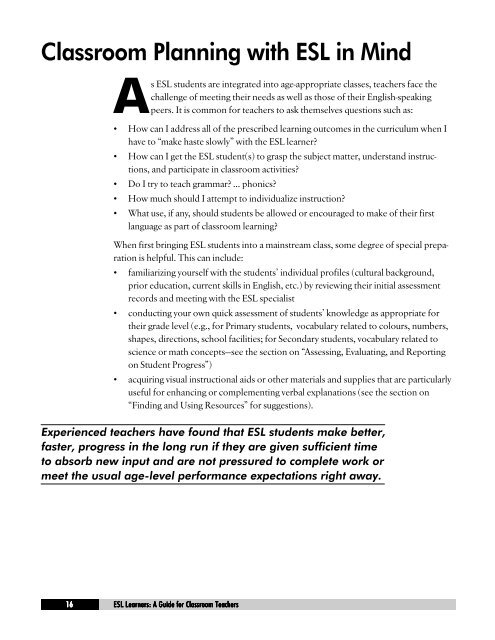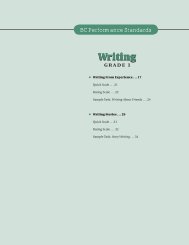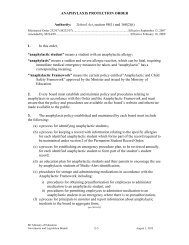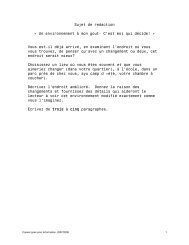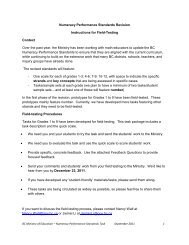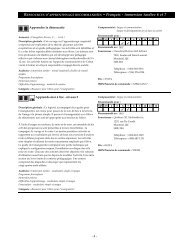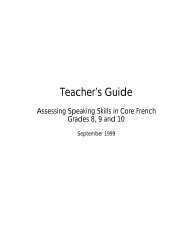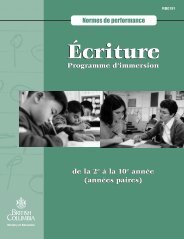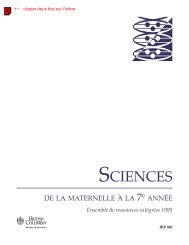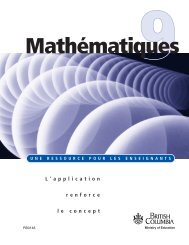A Guide for Classroom Teachers - Education
A Guide for Classroom Teachers - Education
A Guide for Classroom Teachers - Education
You also want an ePaper? Increase the reach of your titles
YUMPU automatically turns print PDFs into web optimized ePapers that Google loves.
<strong>Classroom</strong> Planning with ESL in Mind<br />
16<br />
16<br />
As ESL students are integrated into age-appropriate classes, teachers face the<br />
challenge of meeting their needs as well as those of their English-speaking<br />
peers. It is common <strong>for</strong> teachers to ask themselves questions such as:<br />
• How can I address all of the prescribed learning outcomes in the curriculum when I<br />
have to “make haste slowly” with the ESL learner?<br />
• How can I get the ESL student(s) to grasp the subject matter, understand instructions,<br />
and participate in classroom activities?<br />
• Do I try to teach grammar? ... phonics?<br />
• How much should I attempt to individualize instruction?<br />
• What use, if any, should students be allowed or encouraged to make of their first<br />
language as part of classroom learning?<br />
When first bringing ESL students into a mainstream class, some degree of special preparation<br />
is helpful. This can include:<br />
• familiarizing yourself with the students’ individual profiles (cultural background,<br />
prior education, current skills in English, etc.) by reviewing their initial assessment<br />
records and meeting with the ESL specialist<br />
• conducting your own quick assessment of students’ knowledge as appropriate <strong>for</strong><br />
their grade level (e.g., <strong>for</strong> Primary students, vocabulary related to colours, numbers,<br />
shapes, directions, school facilities; <strong>for</strong> Secondary students, vocabulary related to<br />
science or math concepts—see the section on “Assessing, Evaluating, and Reporting<br />
on Student Progress”)<br />
• acquiring visual instructional aids or other materials and supplies that are particularly<br />
useful <strong>for</strong> enhancing or complementing verbal explanations (see the section on<br />
“Finding and Using Resources” <strong>for</strong> suggestions).<br />
Experienced teachers have found that ESL students make better,<br />
faster, progress in the long run if they are given sufficient time<br />
to absorb new input and are not pressured to complete work or<br />
meet the usual age-level per<strong>for</strong>mance expectations right away.<br />
ESL ESL Learners: Learners: A A <strong>Guide</strong> <strong>Guide</strong> <strong>for</strong> <strong>for</strong> <strong>Classroom</strong> <strong>Classroom</strong> <strong>Teachers</strong><br />
<strong>Teachers</strong>


